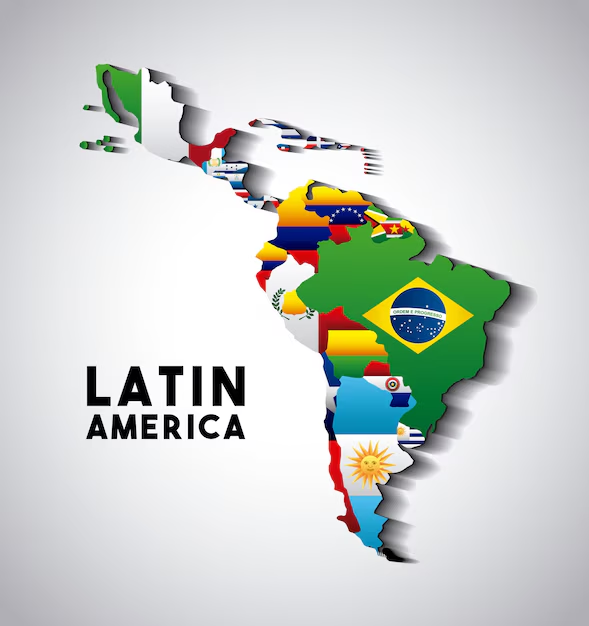Title: Health Diplomacy in North America: Responding to Pandemics and Public Health Threats
Introduction: In today's interconnected world, the importance of international cooperation and unity cannot be overstated, especially when it comes to addressing global health challenges. North and South America, as regions with shared borders and interconnected economies, have a vital role to play in health diplomacy. This article will shed light on contemporary issues in international relations and cooperation in North and South America, particularly in responding to pandemics and public health threats. By understanding these challenges and working together, we can foster unity and build a healthier future for our continents.
-
The Importance of Health Diplomacy: Health diplomacy is the intersection of health and foreign policy, aimed at promoting cooperation, fostering goodwill, and addressing global health challenges. It recognizes that health threats transcend borders and require joint efforts to mitigate their impact.
-
Pandemics and Public Health Threats: Pandemics, like the recent COVID-19 crisis, pose significant challenges to countries worldwide. Effective cooperation is essential in sharing information, coordinating responses, and ensuring equitable access to vaccines and treatments.
-
The Role of International Organizations: International organizations such as the World Health Organization (WHO), Pan American Health Organization (PAHO), and the Centers for Disease Control and Prevention (CDC) play critical roles in coordinating responses, providing technical assistance, and facilitating knowledge-sharing among countries.
-
Cross-Border Collaboration: North and South American countries must enhance cross-border collaboration to establish robust surveillance systems, early warning mechanisms, and joint emergency response plans. By sharing resources and expertise, we can respond swiftly and efficiently to potential public health threats.
-
Regional Health Initiatives: Regional health initiatives, such as the North American Plan for Animal and Pandemic Influenza (NAPAPI), provide a framework for collaboration among North American countries. These initiatives focus on preparedness, response, and recovery from pandemics.
-
Vaccination Diplomacy: Vaccine access and distribution have become critical aspects of health diplomacy. North and South American countries should work together to ensure equitable distribution and address disparities in vaccine availability, especially among vulnerable populations.
-
Sharing Best Practices: By sharing best practices, countries can learn from each other's successes and challenges. This collaborative approach can lead to the development of comprehensive strategies to combat existing and future health threats.
-
Strengthening Health Systems: Investing in resilient and robust health systems is fundamental to preparedness. Collaborative efforts in funding, resource allocation, and knowledge exchange can help strengthen health systems across North and South America.
-
Addressing Health Inequalities: Health diplomacy should prioritize addressing health inequalities, as marginalized and vulnerable populations are often disproportionately affected by public health threats. By working together, we can ensure that no one is left behind.
-
Disaster Preparedness and Response: Cooperation in disaster preparedness and response is crucial in tackling public health emergencies. Joint exercises, training programs, and knowledge sharing can enhance the ability of countries in North and South America to respond effectively to crises.
-
Importance of Research and Innovation: Investing in research and innovation is vital to advance our understanding of diseases, develop new treatments, and improve preparedness. Collaborative research efforts between North and South American countries can yield significant breakthroughs.
-
Engaging Civil Society and Private Sector: The involvement of civil society organizations and the private sector is crucial in health diplomacy. They bring unique perspectives, resources, and expertise that can contribute to comprehensive and effective responses.
-
Leveraging Technology: Technological advancements can facilitate information sharing, real-time surveillance, and telemedicine, improving our ability to respond rapidly to health threats. Collaborative initiatives should leverage these technologies to strengthen health systems.
-
Building Trust and Solidarity: Trust and solidarity are essential building blocks for successful health diplomacy. By fostering open communication, transparency, and mutual support, North and South American countries can build stronger relationships and overcome challenges together.
-
Empowerment and Advocacy: As individuals, we can contribute to health diplomacy by staying informed, advocating for equitable access to healthcare, and supporting initiatives that promote collaboration. Together, we can make a difference and create a healthier and more united North and South America.
Conclusion: Addressing contemporary issues in international relations and cooperation in North and South America requires a collective effort rooted in unity, collaboration, and shared responsibility. By recognizing the importance of health diplomacy, we can respond effectively to pandemics and public health threats, build resilient health systems, and foster equitable access to healthcare. Let us strive to develop our skills and knowledge in contemporary issues, advocate for North and South America unity, and work together towards a healthier future.
Follow-up Questions:
- How do you think North and South American countries can enhance cross-border collaboration in response to public health threats?
- What role can individuals play in promoting health diplomacy and unity in North and South America?
- Have you encountered any successful examples of health diplomacy initiatives in your region?
- What steps do you think should be taken to address health inequalities in North and South America?
Please share this article to inspire others to promote health diplomacy and create a healthier, more united North and South America.





